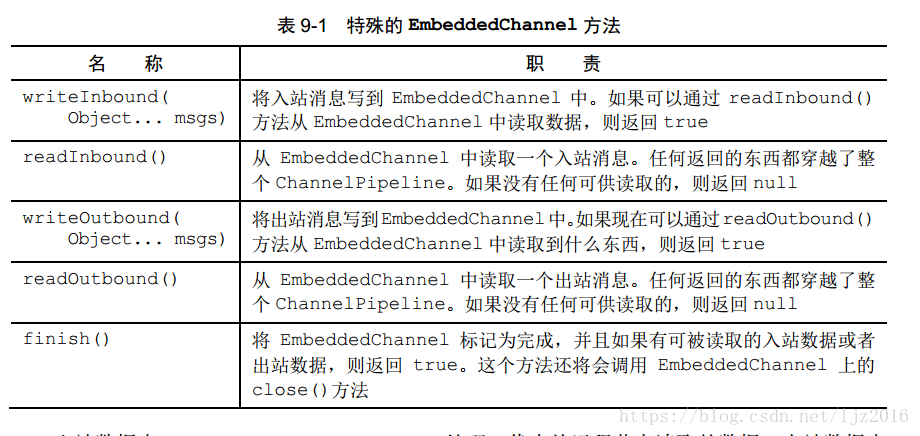1、Channel主要成员和方法
几乎所有的Netty通道都继承了AbstractChannel抽象类,都拥有parent和pipeline两个成员
主要成员:
- parent
- 对于连接监听通道(如NioServerSocketChannel),其parent属性为null
- 对于传输通道(如NioSocketChannel),其parent属性为接收到该连接的通道
- pipeline
- 表示该通道的处理器流水线,该属性被初始化为
DefaultChannelPipeline的实例 ```json //父通道 private final Channel parent; private final ChannelId id; private final Unsafe unsafe; private final DefaultChannelPipeline pipeline;
- 表示该通道的处理器流水线,该属性被初始化为
protected AbstractChannel(Channel parent) { this.parent = parent; this.id = this.newId(); //新建一个底层的NIO通道,完成实际的IO操作 this.unsafe = this.newUnsafe(); //新建一条通道流水线 this.pipeline = this.newChannelPipeline(); }
protected AbstractChannel(Channel parent, ChannelId id) {this.parent = parent;this.id = id;this.unsafe = this.newUnsafe();this.pipeline = this.newChannelPipeline();}
**接口中定义的重要方法:**- `ChannelFuture connect(SocketAddress remoteAddress)`- 连接远程服务器,调用后立即返回,返回值为执行连接操作的异步任务- `ChannelFuture bind(SocketAddress localAddress)`- 绑定监听地址<br />- `ChannelFuture close()`- 关闭通道连接,返回连接关闭的异步任务- `ChannelFuture closeFuture() `- 用来处理 channel 的关闭,sync 方法作用是同步等待 channel 关闭;而 addListener 方法是异步等待 channel 关闭- `Channel read()`- 读取通道数据,并启动入站处理<br />- `ChannelFuture write(Object msg)`- 启动出站流水处理,将最终处理数据结果写到底层通道<br />- `Channel flush()`- 将缓冲区的数据立即写出到对端<br /><a name="NQIDj"></a># 2、EmbeddedChannel开发人员可以通过EmbeddedChannel方便快速的进行ChannelHandler业务处理器的单元测试,避免每开发一个业务处理器都进行服务器和客户端的重复启动。```json@Slf4jpublic class TestEmbeddedChannel {public static void main(String[] args) {ChannelInboundHandlerAdapter h1 = new ChannelInboundHandlerAdapter(){@Overridepublic void channelRead(ChannelHandlerContext ctx, Object msg) throws Exception {log.info("入站处理器h1");super.channelRead(ctx, msg);}};ChannelInboundHandlerAdapter h2 = new ChannelInboundHandlerAdapter(){@Overridepublic void channelRead(ChannelHandlerContext ctx, Object msg) throws Exception {log.info("入站处理器h2");super.channelRead(ctx, msg);}};ChannelOutboundHandlerAdapter h3 = new ChannelOutboundHandlerAdapter(){@Overridepublic void write(ChannelHandlerContext ctx, Object msg, ChannelPromise promise) throws Exception {log.info("出站处理器h3");super.write(ctx, msg, promise);}};ChannelOutboundHandlerAdapter h4 = new ChannelOutboundHandlerAdapter(){@Overridepublic void write(ChannelHandlerContext ctx, Object msg, ChannelPromise promise) throws Exception {log.info("出站处理器h4");super.write(ctx, msg, promise);}};EmbeddedChannel embeddedChannel = new EmbeddedChannel(h1,h2,h3,h4);embeddedChannel.writeInbound(ByteBufAllocator.DEFAULT.buffer().writeBytes("hello".getBytes(StandardCharsets.UTF_8)));embeddedChannel.writeOutbound(ByteBufAllocator.DEFAULT.buffer().writeBytes("hello".getBytes(StandardCharsets.UTF_8)));}}

